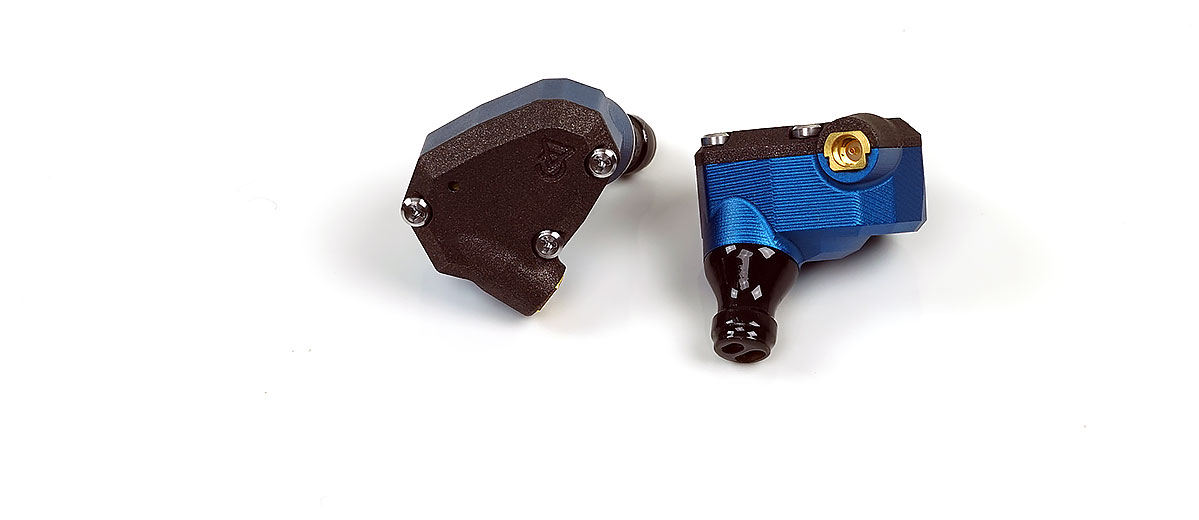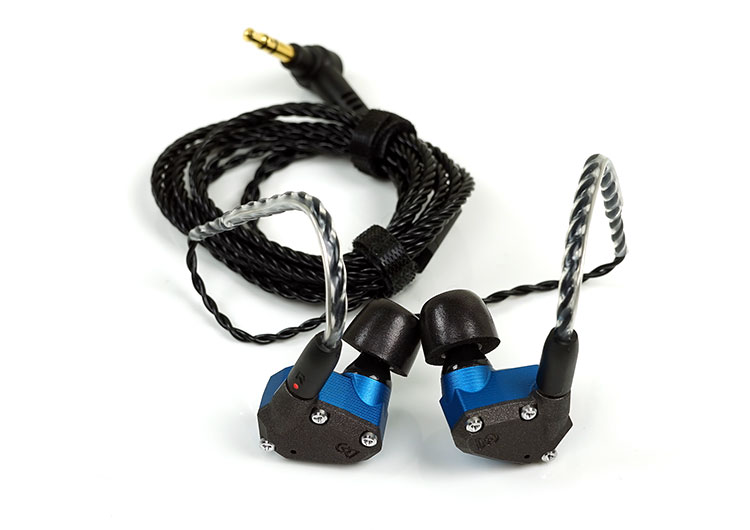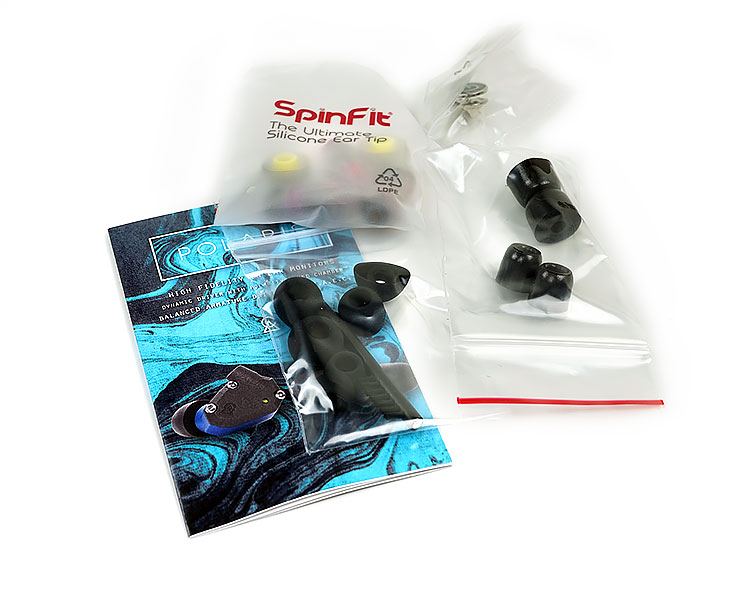The Campfire Audio Polaris is the company’s new mid-range hybrid dynamic and balanced driver universal IEM. It is priced at $599.
Disclaimer: The Campfire Audio Polaris sent to us is a sample in exchange for our honest opinion in this review. We thank the team at Campfire Audio for giving us this opportunity.
To read more about Campfire Audio products we reviewed on Headfonics click here.
Note, this review follows our new scoring guidelines for 2020 which you can read up on here.
Roadmap
The Polaris is the big release of 2017 from Campfire Audio after a big push for their high-end units in late 2016. Out of that batch, the Dorado was their first hybrid IEM sporting an 8.5mm beryllium PVD dynamic driver combined with two balanced armatures.
The Dorado also drew from the Andromeda with the use of their patented TAEC system which is a tubeless acoustic chamber design for excellent high-frequency reproduction.
When we reviewed the Dorado we found it to be fun and engaging with plenty of detail. It comfortably sat somewhere between the Vega and Lyra II in terms of impact and dynamics.
Fast forward Fall 2017 and the Polaris continues the hybrid theme. Again, we are looking at an 8.5mm dynamic driver with a dual BA configuration using the TAEC design. The price this time? Just $599, which puts the Polaris right in the crossfire of mid-fi audiophile spending.
What Is The Pitch?
Price
Previously, the Orion and Nova occupied the sub $700 price point in their range. The Lyra II went up and down a little via Massdrop but otherwise stays right on the SRP $700 button. With the Nova now quietly discontinued a little gap appeared in the Campfire product range for something to replace it.
TAEC
Price-wise the Polaris fits the bill but the hybrid design means this is nothing like a direct replacement for the Nova. This is the first time CA have been able to squeeze in some of their flagship technology at a more affordable level. Chiefly among those flagship cues is the inclusion of the excellent 3-D printed TAEC design lifted from the higher-end Dorado, Jupiter, and Andromeda.
Polarity Tuned Chamber
The second innovative pitch is their new Polarity Tuned Chamber design centered around the dynamic driver of the Polaris. Basically, this is a set of 3-D printed tuned internal chambers positioned to the front of the driver and another to the rear. By creating these chambers, CA pitch this as really opening up the performance and power of the Polaris’s dynamic driver.
Design
Form Factor
It is a return to the familiar, at least if you have been using Campfire products since the very start. The Polaris form factor is the same Cerakote edged finish design of the Orion, Jupiter and the Andromeda models.
Unlike those three designs, the Polaris is more striking in its visuals with a standout two-tone finish. The Cerakote front plate is more of a charcoal or gunmetal shade with the anodized main body shell cutting a much brighter and in your face blue tone.
The plate is also held in place by those 3 familiar silver screws first seen on the Andromeda and sporting a bass vent just to the lower rear end for the dynamic driver to breathe. The screws do tend to stand out a bit given the more muted gunmetal shade of the Cerakote finish around it.
Materials
Cerakote is a very durable polymer-ceramic composite coating and should provide a very robust level of protection against chipping and drops. Cerakote was actually the finish of choice for CA after the initial run of the Lyra, Jupiter, and Andromeda, replacing the original Anodized coating which you now see on the Polaris body.
The anodized coating is not quite as durable but bear in mind the price drop from the Jupiter and Andromeda makes this an understandable move to keep Polaris costs competitive.
The excellent and very durable beryllium copper MMCX connectors have been retained which is a feature throughout Campfire Audio’s IEM range from the entry-level Orion to the flagships Andromeda and Vega.
Nozzle Tweaks
The nozzle materials have also changed from the likes of the Andromeda. The Polaris now uses a hardened plastic material instead of the solid metal finish of the flagship BA IEM nozzles.
The nozzle is also squeezed in the middle and generally a little longer than before with a dual bore vent as opposed to tri-bore. It sort of reminds me of vape tips in a funny kind of way. In theory, this nozzle should provide a fairly deep fit and be less dependent on tips providing that final furlong.
Cable
Materials
The Polaris is also packing a brand new Copper Litz cable. This is the 3rd generation cable used in the CA IEM lineup with the first being the Tinsel cable. The SPC Litz cable of the flagship IEMs still remains their top stock cable. This cable is not for sale separately unlike the SPC Litz cable so I can’t put a price on it.
Side by side it seems like a slightly thinner gauge, though I would hazard a guess and say its still a 4-conductor just in a pure copper variant. Tonally this should provide a slightly smoother signature than the livelier SPC so even if the bias is bass-driven you will get that copper richness throughout the response.
Much like the SPC cable, this is a lightweight, pliant, and very comfortable cable to work with. Microphonics are low and throughout the review process the cable remained pleasingly memory and tangle-free. This is actually a very good out of the box cable, at least physically.
Terminations
The 1.35m cable is terminated with the beryllium copper MMCX connectors which are much more durable than the usual brass connections. It also sports a black PET jacket, braided pretty tight and finished with their usual right-angled 3.5mm gold plated stereo jack.
The metal y-split tube is also black with a discreet adjustable chin slider. Much like their SPC variant the new copper Litz cable is sporting some long memory retentive hooks that should help reduce microphonics nicely.
Comfort & Seal
The deeper nozzle of the Polaris produces a slightly better seal for me personally than the Andromeda and Jupiter, especially with the use of the foam tips.
The return to the angular form factor may present some issues to those with smaller ears but personally, I found the comfort levels to be very good. I was half expecting these to have a slightly more unforgiving fit and of course, ears do differ but thankfully at no time did I feel any undue pressure on my outer ear. Perhaps this is due to that deeper nozzle pushing out the Polaris main body just a little more from the ear preventing the edging from putting pressure on the ears.
There is really zero movement or gaps being created in either an open or closed jaw stance. Despite the venting for the dynamic driver, the seal with the Comply tips is well above average, perhaps even better than the shallower BA Orion.
Tips
As always the tip selection is excellent with the Polaris. CA does some of the best tip lineups in the business. Included are
- SpinFit single bore silicone tips (xs/s/m/l)
- Campfire Audio foam tips(s/m/l)
- Silicon single bore tips (s/m/l)
Out of the box, the Polaris is fitted with foam tips and these are the ones I tended to stick with during the review for the superior seal. You can get a slightly “lighter sound” with the silicone variations but this is supposed to be a fun sounding IEM and I felt the foams presented that in the best way.
Accessories & Packaging
The Polaris continues with the tone of the flagship IEMs in terms of packaging and accessories. In fact, you could swap them all around and it wouldn’t make a difference apart from the new funky blue packaging which matches the tones of the Polaris IEM. the dimensions of the box remain the same, nothing overcooked, small and handy to carry.
The accessory selection includes (outside of tips):
- Detachable cable
- Zippered carrying case
- Cleaning tool
- Campfire Audio pin
- Polaris User guide
The leather case is also the same black grungy type zipper and fur-lined carry case as the Dorado, Vega, and Lyra MK2. It is the same excellent quality as always and great at protecting your IEM with enough room for a spare cable or set of tips. I can’t complain, they look great and I love the fur lining and finish on the outside. Perhaps one of the nicest cases in the market.
Click on Page 2 below for our Sound Impressions & Comparisons






